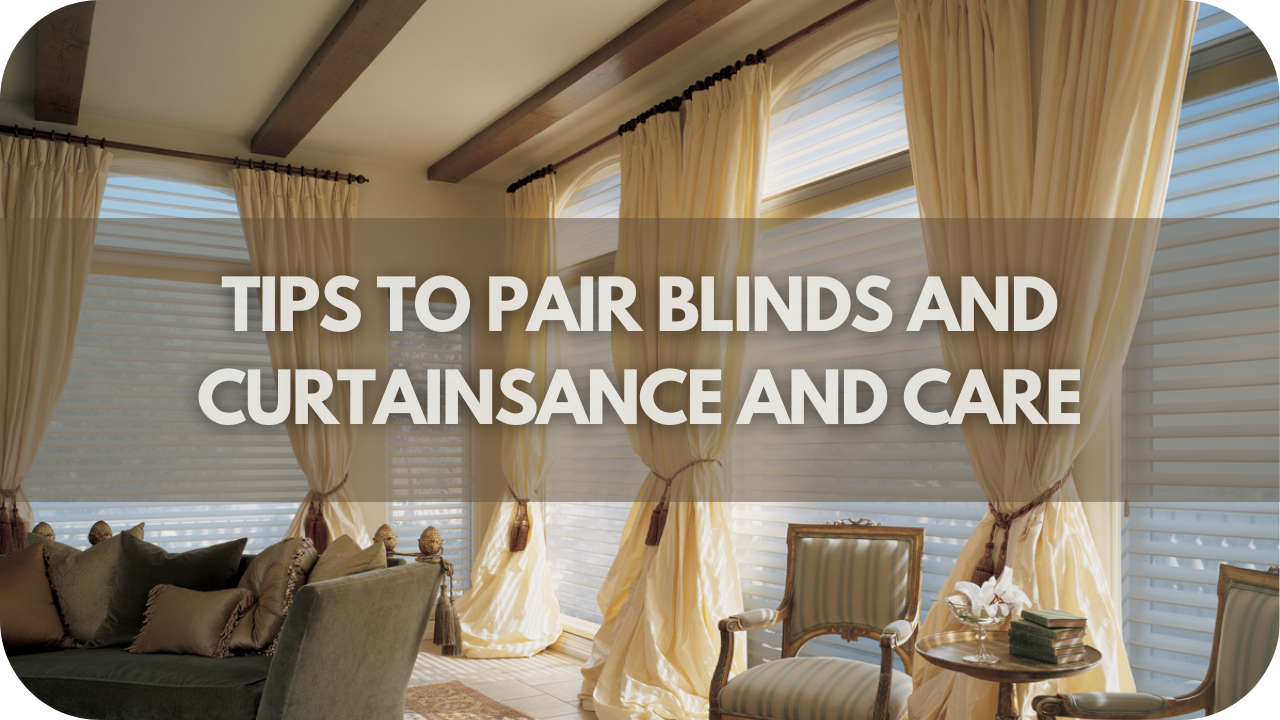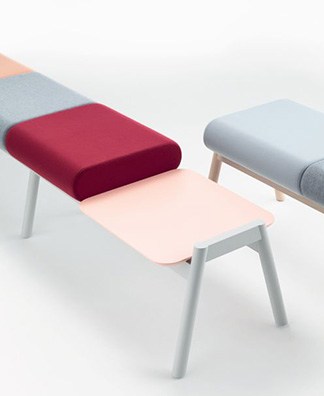Do you need help to create a cohesive look by pairing blinds and curtains in your home?
Mismatched window treatments can make your space feel disjointed and less appealing, diminishing its overall style.
With these five expert tips, you can effortlessly combine blinds and curtains to achieve a polished, harmonious interior design.
Tip 1: Choose Complementary Colours and Patterns
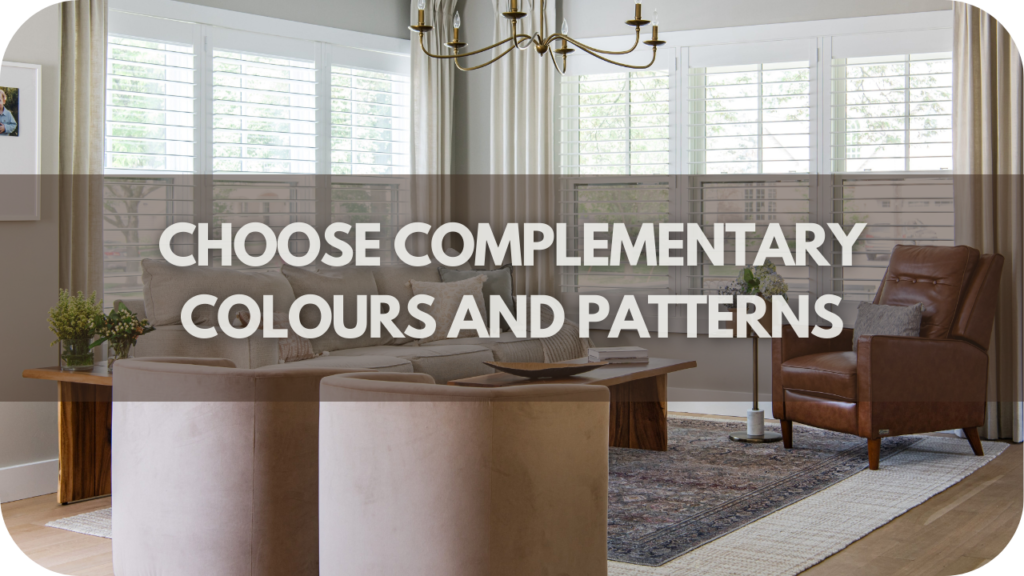
Achieving a harmonious look with double dressing starts with selecting complementary colours and patterns. The key is to create a visual balance that enhances the room’s overall aesthetic.
Start by choosing a primary colour for the blinds or curtains, then select a secondary colour that complements or contrasts tastefully with the first. For instance, pairing neutral-coloured blinds with bold, patterned curtains can create a striking effect without overwhelming the space.
It’s crucial to maintain consistency in scale and style when mixing patterns. A large, bold pattern on the curtains should be balanced with a more subtle design on the blinds, or vice versa. This approach prevents visual clutter while still allowing for creativity.
Additionally, consider the room’s existing colour scheme to ensure the chosen colours and patterns integrate seamlessly.
Tip 2: Consider the Functionality of Each Layer
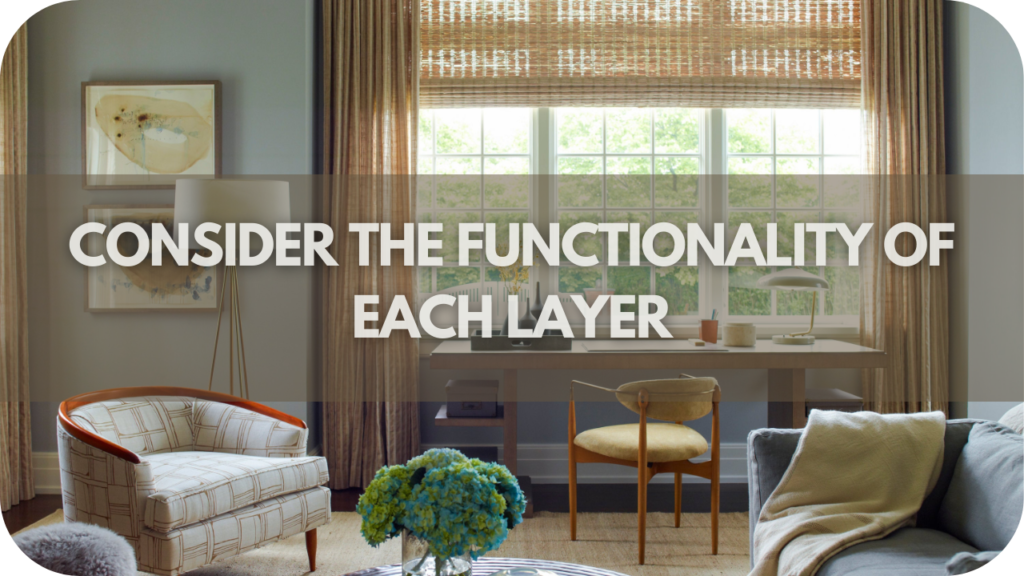
Beyond aesthetics, the functionality of each layer in your double dressing is crucial to achieving the desired effect. Blinds and curtains serve distinct purposes, and understanding these can help you maximise both style and practicality.
Blinds are excellent for precise light control and privacy. They allow you to adjust the amount of natural light entering the room throughout the day. They also offer insulation, helping to regulate room temperature and reduce energy costs.
Curtains, on the other hand, add softness and warmth to a space while also enhancing the overall design. They can provide an additional insulation layer and block out unwanted light when drawn fully.
When pairing blinds with curtains, consider the specific needs of each room. In a bedroom, for example, you might prioritise blackout blinds for complete darkness.
In contrast, sheer curtains over Venetian blinds in a living room could allow for filtered light with added privacy.
Tip 3: Match the Style to Your Interior Décor
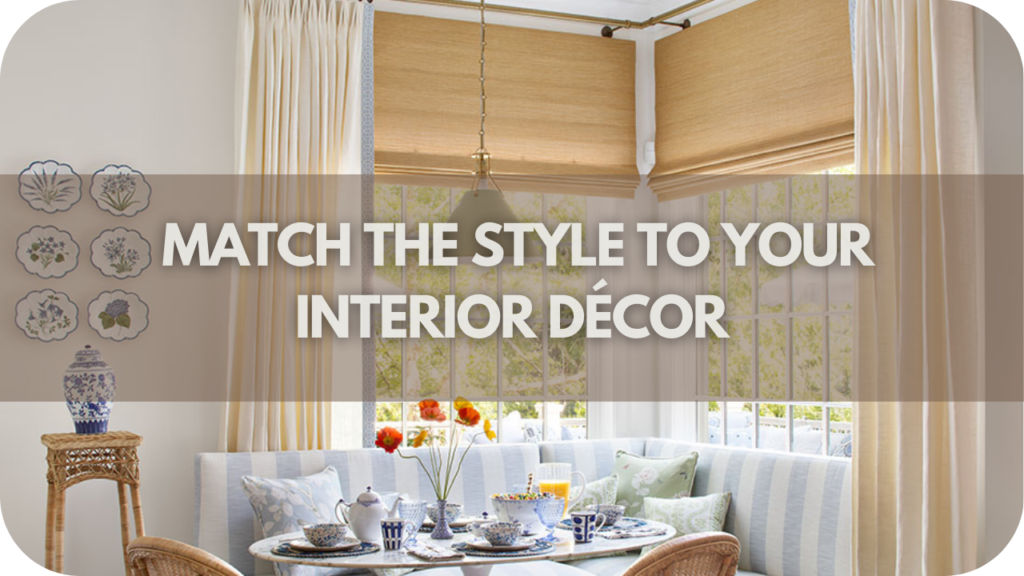
Matching your blinds and curtains to your interior décor is essential for a polished and cohesive look. The right pairing should complement, not clash with, your home’s existing style. Each style has distinct characteristics that can guide your choice of window treatments.
In a modern interior, sleek roller blinds paired with minimalistic curtains can enhance the space’s clean lines and contemporary feel. Consider Roman blinds combined with floor-length curtains in rich fabrics like velvet or brocade for a more traditional setting, adding luxury and timeless elegance.
If your décor leans towards rustic or farmhouse styles, wooden blinds with linen or cotton curtains can bring warmth and texture to the room.
Consistency is critical; ensure that your blinds and curtains’ colours, patterns, and textures align with the overall design scheme. This approach will help create a unified look that ties the room together, making your window treatments an integral part of the décor rather than an afterthought.
Tip 4: Play with Textures and Fabrics
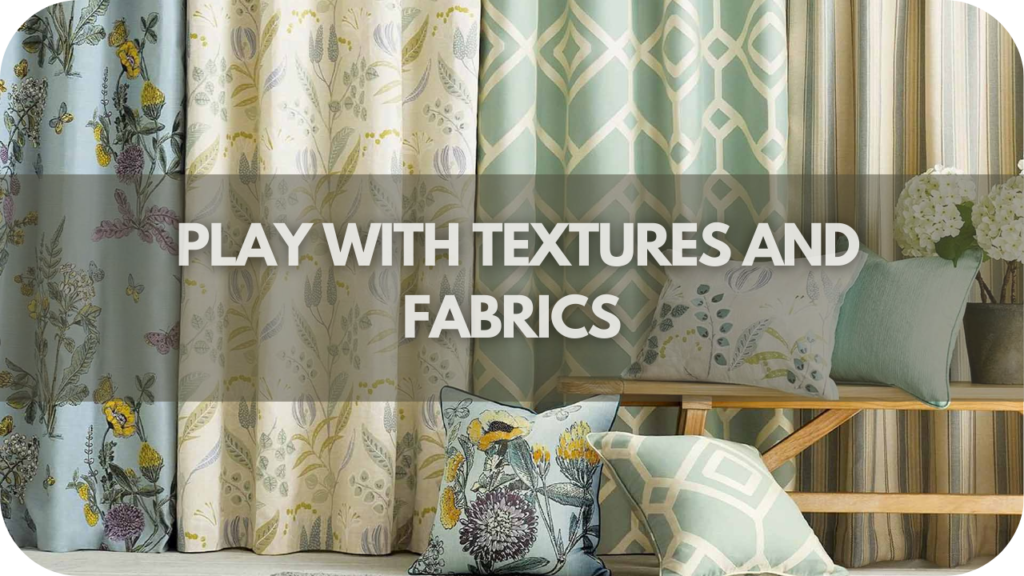
Exploring different textures and fabrics can elevate your window treatments, adding depth and interest to your space. When pairing blinds and curtains, consider how the materials interact and complement each other.
For instance, combining the sleekness of aluminium blinds with the softness of velvet curtains creates a sophisticated contrast that adds visual richness to the room.
Mixing textures also allows you to play with light and shadow. Sheer curtains paired with textured blinds, such as wood or woven bamboo, can filter natural light beautifully while introducing subtle layers to your décor.
On the other hand, heavy fabrics like brocade or linen paired with smooth roller blinds can create a more substantial and luxurious feel, ideal for formal living rooms or master bedrooms.
Consider the overall atmosphere you want to achieve. Light, airy fabrics make a room open and spacious, while heavier, more tactile materials bring warmth and cosiness.
Tip 5: Proper Installation for a Polished Look
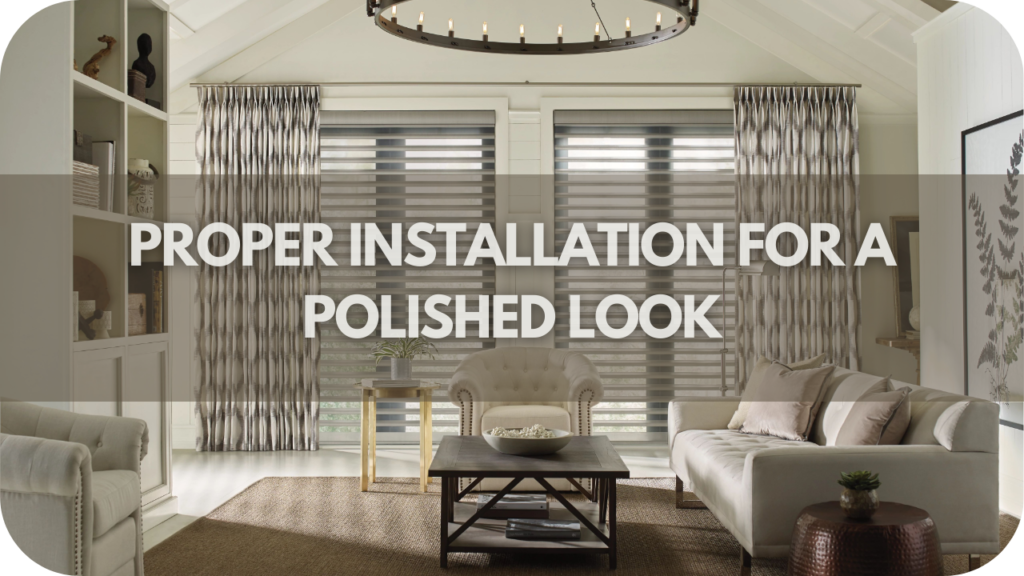
How you install your blinds and curtains can significantly impact the overall appearance of your double-dressing. Proper installation is critical to achieving a polished, professional look that enhances interior design.
Start by ensuring your blinds are correctly measured and fitted to the window. Ill-fitting blinds can detract from the clean lines and neat appearance you’re aiming for, so precision is essential.
When it comes to curtains, the height and width at which they are hung can make a big difference. Hanging curtains higher than the window frame and allowing them to extend more exhaustively than the window itself creates the illusion of taller ceilings and oversized windows, making the room feel more spacious.
Additionally, ensure that the curtain rod or track is sturdy and aligned, as a misaligned rod can cause the curtains to hang unevenly.
Layering blinds and curtains also require careful consideration of how they interact. Ensuring enough clearance between them allows for the smooth operation of both.
FAQs
1. What are the benefits of double-dressing with blinds and curtains?
Double-dressing provides enhanced light control, improved insulation, added privacy, and a stylish, layered look for your windows.
2. How do I choose the right colours for pairing blinds and curtains?
Choose colours that complement your room’s scheme, using a mix of neutrals and bold tones. Ensure one element is solid if the other is patterned.
3. Can I pair blinds and curtains in a small room without overwhelming the space?
Yes, use light colours and simple designs. Hang curtains higher and more comprehensive than the window to create a sense of space.
4. What are the best materials for insulating blinds and curtains?
Cellular blinds and thermal or blackout curtains are excellent for insulation, helping regulate temperature and reduce energy costs.
5. How do I properly install blinds and curtains together?
Install blinds inside the window frame and hang curtains higher and more comprehensive than the window. Ensure there’s enough clearance between them for smooth operation.
Conclusion
These tips will help you achieve a stylish, functional double-dressing look that enhances your space. Experiment with colours, patterns, and textures to tailor the window treatment. Ready to elevate your décor?
Explore our range of blinds and curtains at Into Blinds Melbourne to find the perfect match for your home.

